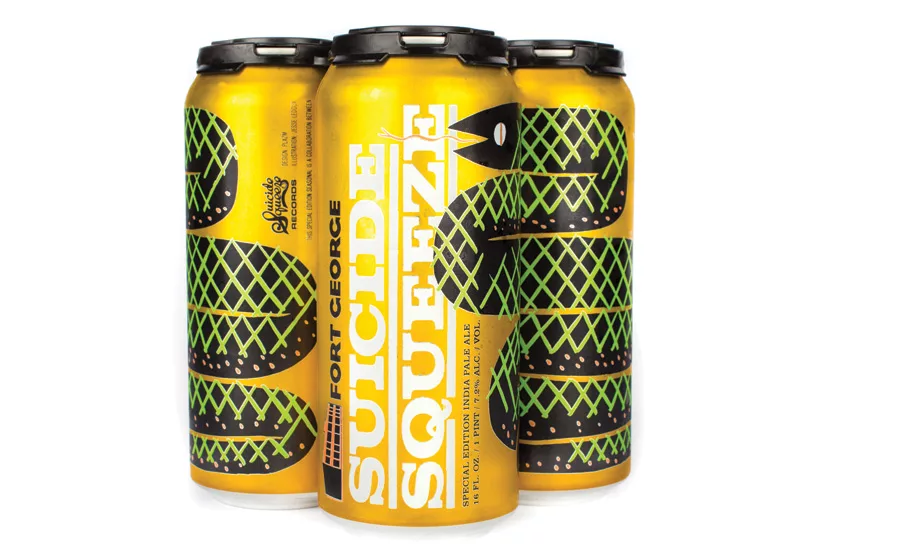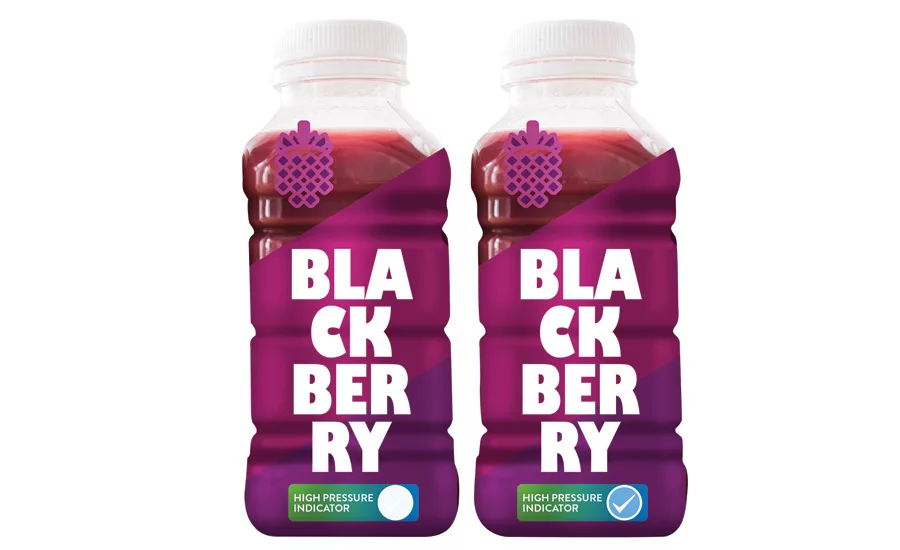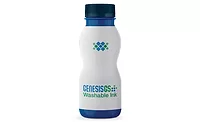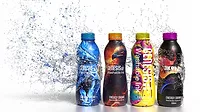Beverage brands benefit from advancements in inks, coatings
Thermochromic inks under go ‘color explosion’


As consumers continue to seek out variety within their beverage options, the probability of SKU proliferation seems to be a certainty for years to come. As brand owners hope to stand out from the crowd, inks and coatings are helping manufacturers draw in consumers.
“The primary goal of any package is to protect the product and to conveniently, efficiently and sustainably deliver that product to the end-user in an economical way,” says Ron Skotleski, director of marketing for Crown Beverage Packaging North America, a business unit of Philadelphia-based Crown Holdings Inc. “But for consumers, the inks, varnishes and graphics on packaging provide an important opportunity to leave a positive first impression and encourage interaction with the brand. In many cases, the look and feel of a package can directly influence the consumer’s purchasing decision, so really, it could be considered the most impactful piece of beverage packaging.”
As beverage-makers look to increase impact, they also recognize the connections that can be gained from primary packaging. “Today’s consumers are looking for ways to connect with brands and are not afraid to try something new,” Skotleski says. “Therefore, having an appealing package is especially important when you consider the current, highly competitive beverage marketplace comprised of shrinking shelf space, more diverse options and new niche categories popping up every day.”
Alex Folloso, manager of metal decoration research and development for INX International Ink Co., Schaumburg, Ill., also explains how a beverage’s packaging can connect with the consumer.
“Inks and coatings applied on a beverage can provides the consumer a story about the product,” he says. “Use of innovative inks and coatings enhances the experience through unique visual effects or by affecting the sense of touch. Color consistency and quality of the package also affect how the brands are perceived.”
However, those connections are not limited to direct interactions in today’s digital world.
“The future of ink technology and design are about turning the package into video content for 15 [to] 24 year olds,” says Patrick Edson, chief marketing officer for Colorado Springs, Colo.-based Chromatic Technologies Inc. (CTI). “Kids are documenting their lives, friendships and adventures in video. Think Vine, [Facebook] and Snapchat. Quick five- to 20-second videos that tell a story, joke or convey an experience. Share a Coke with names and Starbuck’s recent ‘Unicorn Drink’ are giving consumers ‘content’ to share with friends and on social media. Think of the package as an interesting character auditioning for a consumer’s life video.”
This storytelling opportunity is one that Edson says brand owners should embrace. “Brands must start thinking of packaging as how they create brand experiences in the hands of consumers that surprise, reflect values and act as props for a consumer to make a point or show off to his/her friends,” he says.
Crown’s Skotleski adds that as the capabilities for inks and coatings have advanced, brand owners are embracing the evolving technologies.
“Over the past few years especially, brand owners have taken their graphics to the next level of complexity and technology,” he says. “Graphics, inks and varnish options are viewed as one of the most critical pieces of a new product launch, and rightfully so. At Crown, our graphics department’s designers spend time with each of our customers during the early phases of a new label, describing which specific technology might help complement a brand or chosen design.”
‘Equivalent to magic’
As author Sir Arthur Charles Clarke once said, “Any sufficiently advanced technology is equivalent to magic.” Advancements such as thermochromic inks and beyond have helped bring this magic to beverage packaging.
“Thermochromic ink was once a relatively unknown capability, but has since transformed into a widely popular finish with the help of the notable Coors Light can’s ‘blue mountains’ that appear when the beer reaches its optimal drinking temperature,” Skotleski says. “Today, thermochromic inks have the ability to change color when cold, and even go a step further by changing color again or ‘revealing’ a new design when they return to being warm. From a technical standpoint, our ink partners have made great strides.”
CTI’s Edson notes that the reveal technology is among the most exciting advancements taking place within the inks market.
“The most exciting new technology in beverages is ‘reveal technology,’” he says. “This is a thermochromic-ink system that hides a message when the package is cold or warm. It’s only after a consumer drinks a cold beverage that a message, code or game is revealed. It’s the first time a consumer has had to drink the package to enjoy the promotion. Other exciting ideas are brands that want to win outdoor occasions with photochromic (sun-activated) inks, or entertain kids with glow-in-the-dark and new technology to stop counterfeiting.”
Edson adds that thermochromic inks offer consumers the guarantee that the drink they are about to consume is cold. He also points to research explaining how consuming a cold versus a warm beverage can change a consumer’s brand perception.
“Forty percent of consumers complain about getting stuck with a ‘too warm’ beverage when buying from a store or being served in a restaurant,” he says. “Research data shows that if two brands are liked equally, two-thirds of consumers will switch to a brand that has a cold guarantee.”
However, Edson notes that the lack of pigment variations was a concern voiced by brand owners. “With new advancement in dye molecules, there has been a ‘color explosion,’” he says. “There are now hundreds of color options, so brands can create their own unique design fingerprint that matches their equity for cold and refreshing; hot and playful (hot drinks); or colorful and fruity (flavors).”
Although thermochromic inks have made great advancements, suppliers note that this is not the only progress taking place within inks and coatings.
“Advancements in printing plate technology, in combination with the proper ink technology, provide improved graphics from years past,” INX International’s Folloso says. “Computer-to-plate (CTP) technology, where the image transfers to the plate, has the advantage of increasing detail and sharpness compared to traditional plate making. Innovations and consistency of ink raw materials help [to] further advance our capabilities on press.”
INX International also is looking into new resin chemistries.
“INX is testing new resin chemistries that enhance the performance of metal-decorating ink on press,” Folloso says. “We are also experimenting with an ink innovation that provides touch effect and gloss/matte contrast on beverage cans.”
Within the substrates market, Crown’s Skotleski highlights the progress made to ensure that filling and packaging operations are not adversely impacted. “The challenge with ‘over varnishes’ like matte or tactile was maintaining the mobility throughout the filling process,” he says. “For example, too much can-to-can friction had the potential to slow down a customer’s filling line. The matte over varnish developed and in use today minimizes this friction.”
Ink and coating technologies also are being impacted by food and beverage processing trends as well as food safety measures. As capabilities like high-pressure processing (HPP) become more mainstream, suppliers are looking to help brand owners maintain their efficacy and transparency with consumers.
“The demand for technology that helps with food safety in flexible food packaging, such as fresh juices and dressings, is exploding,” CTI’s Edson says. “Consumers want products that have natural ingredients and avoid preservatives and heat pasteurization. To address safety and shelf life, brands are moving to high-pressure processing, typically exposing the package to 87,000 psi for three minutes.
“The FDA is requiring all HPP-related brands to have FMSA (Food Safety Modernization Act) plans in place by the fall of 2017,” he continues. “To assist with the monitoring and auditing of the process, CTI developed a high-pressure ink indicator that appears on the package at 50,000 psi to confirm a product has been subjected to HPP and also [to] detect any severe-heat damage during transportation (less than 90 [degrees] Fahrenheit exposure). Prior to this technology, any product that bypassed HPP or suffered heat damage went undetected and became ‘safety hand-grenades’ in the supply chain.” BI
Looking for a reprint of this article?
From high-res PDFs to custom plaques, order your copy today!









